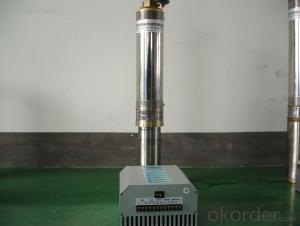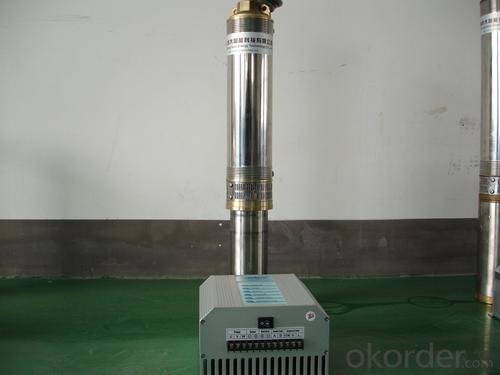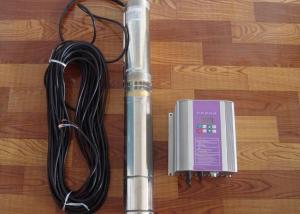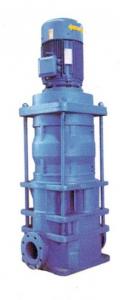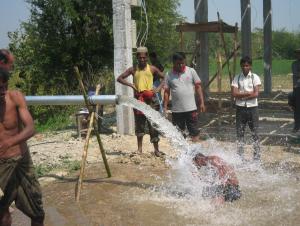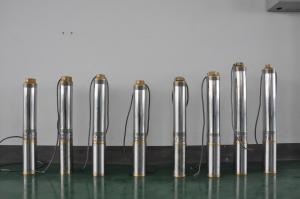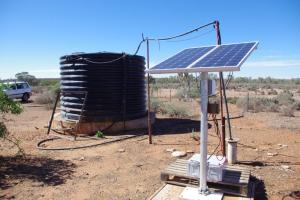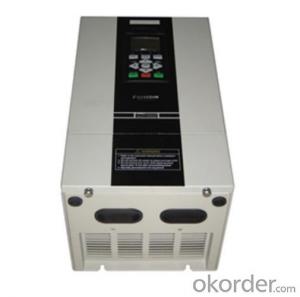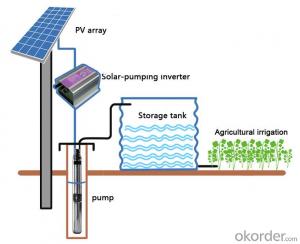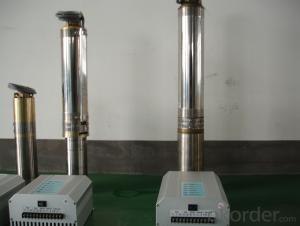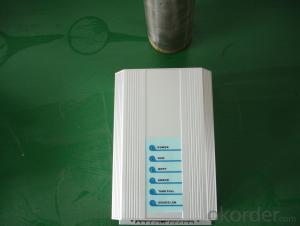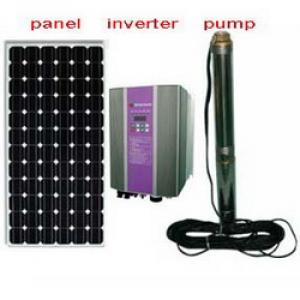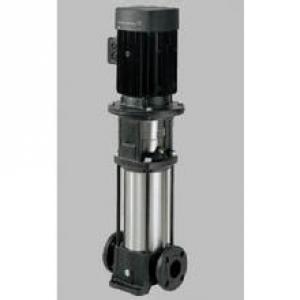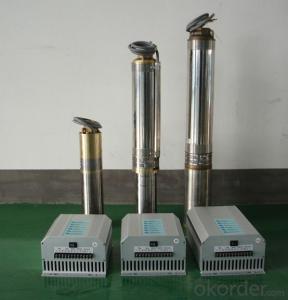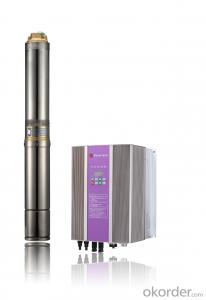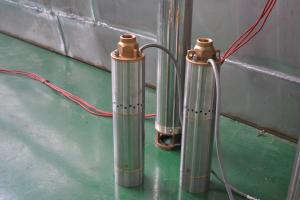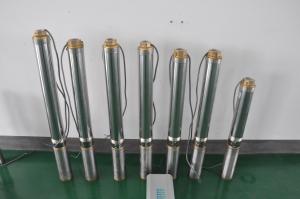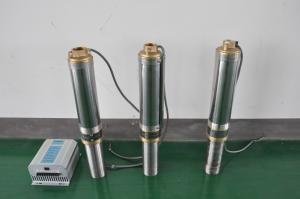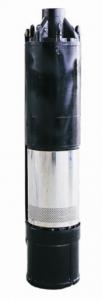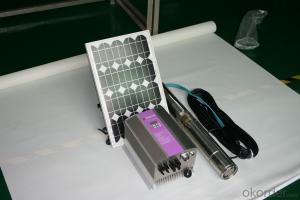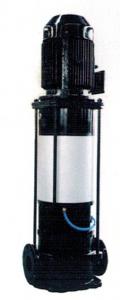Sunnydaze Solar DC Solar Pump
- Loading Port:
- China Main Port
- Payment Terms:
- TT OR LC
- Min Order Qty:
- -
- Supply Capability:
- -
OKorder Service Pledge
OKorder Financial Service
You Might Also Like
Item Description :
This superb new addition to our solar fountain range comes with a 10w solar panel,and a powerful fountain pump that is capable of producing fountains of up to 2m in height. As well as being easy to set up and use.Instruction manual is supplied for assembly and maintenance.
Solar Fountain Key Features :
Powered by direct sunlight
No high voltage electric mains required
Safe for children
Max. height of fountain: 2M
Max. flow capacity: 800 L/H(176 GAL)
10W Polycrystalline solar panel included
18V DC brushless pump
Solar Pump Features :
Can produce fountains up to : 2M (tube height) 1.4M (fountain height)
Comes with multiple nozzle accessories
Cable Length : 5M
Solar Panel Features :
10W peak power.
Polycrystalline highly efficient solar panel
Comes mounted in aluminium frame
Comes with ground stake and rotating knob so you can angle your panel toward the sun
What You Will Get :
10W solar panel
Solar pump
Ground Sake
Nozzle accessories
Precautions :
DO NOT alter or change the product itself or its components
Operate pump in freshwater only, never above 50 degrees celsius
Keep away from flammable liquids
Do not connect to any other power supply other than the included
- Q: How do I monitor the performance of a solar pump system?
- To monitor the performance of a solar pump system, you can use various methods: 1. Real-time monitoring: Install a data logger or monitoring system that records and displays key parameters such as flow rate, pressure, voltage, and solar irradiance. This allows you to monitor the system's performance continuously and identify any deviations or issues promptly. 2. Remote monitoring: Utilize a cloud-based monitoring platform that connects to the solar pump system and provides real-time data access through a computer or mobile device. This enables you to monitor the system's performance from anywhere and receive alerts or notifications for any abnormalities. 3. Regular inspections: Conduct periodic visual inspections of the solar pump system to ensure that all components are in proper working condition. Check for any leaks, damaged cables, loose connections, or signs of wear and tear. These inspections will help identify potential performance issues before they escalate. 4. Performance analysis: Analyze historical performance data to identify any trends or patterns that may indicate inefficiencies or degradation over time. Compare the system's actual performance against expected values to assess its overall efficiency and identify areas for improvement or optimization. By implementing these monitoring practices, you can ensure the optimal performance of your solar pump system, maximize energy generation, and minimize downtime or maintenance costs.
- Q: Are there any limitations to the type of water source that can be used with a solar pump?
- Yes, there are some limitations to the type of water source that can be used with a solar pump. Solar pumps are typically designed to work with clean water sources such as wells, boreholes, or rivers. They may face challenges in pumping water from sources that have high levels of sediment, debris, or contaminants. Additionally, the efficiency of a solar pump may be affected if the water source has low or inconsistent water levels, as it relies on sunlight to generate power.
- Q: Are there any limitations to the flow rate of water a solar pump can handle?
- Yes, there are limitations to the flow rate of water that a solar pump can handle. The flow rate is dependent on factors such as the size and capacity of the pump, the power output of the solar panels, and the available sunlight. If the solar pump is not appropriately sized or powered, it may struggle to handle higher flow rates. Additionally, factors like the distance the water needs to be pumped and the elevation can also impact the flow rate capabilities of a solar pump.
- Q: What is the maximum operating pressure of a solar pump?
- The maximum operating pressure of a solar pump can vary depending on the specific model and design. However, on average, solar pumps typically have a maximum operating pressure of around 100-150 pounds per square inch (psi).
- Q: Are solar pumps weatherproof?
- Yes, solar pumps are weatherproof. Solar pumps are designed to withstand various weather conditions, including rain, snow, and extreme temperatures. They are typically made with durable materials that are resistant to corrosion and UV radiation. Additionally, they are often equipped with protective covers or casings to shield the internal components from moisture and other environmental elements. This weatherproof design ensures that solar pumps can operate efficiently and reliably in any outdoor setting, making them suitable for a wide range of applications, such as irrigation, water supply, and fountain systems.
- Q: What is the payback period for installing a solar pump?
- The payback period for installing a solar pump varies depending on factors such as the initial cost of installation, the amount of energy savings achieved, and any potential incentives or rebates available. On average, the payback period for a solar pump installation can range from 3 to 10 years.
- Q: How long do solar pumps last?
- Solar pumps typically have a lifespan of around 20-25 years, although this can vary depending on factors such as usage, maintenance, and quality of the pump.
- Q: Can a solar pump be used in areas with strict emissions regulations?
- Yes, a solar pump can be used in areas with strict emissions regulations. Solar pumps operate using renewable energy from the sun, which is a clean and emission-free source of power. As a result, they do not produce any harmful emissions or pollutants that could violate the regulations in place. This makes solar pumps an environmentally friendly and compliant solution for pumping needs in areas with strict emissions regulations.
- Q: Can a solar pump be used for water supply in remote research laboratories?
- Yes, a solar pump can be used for water supply in remote research laboratories. Solar pumps are an efficient and sustainable solution for accessing water in remote locations where there may be limited or no access to electricity. They can be powered by solar panels, which convert sunlight into electricity to operate the pump. This makes them a reliable and cost-effective option for providing water supply to remote research laboratories without relying on traditional power sources.
- Q: Can a solar pump work during cloudy days?
- Yes, a solar pump can still work during cloudy days. While the pump's efficiency may be reduced due to less sunlight, it can still generate power from diffuse light and continue to operate. The pump's output may be lower than on sunny days, but it can still function and provide water circulation or other intended purposes.
Send your message to us
Sunnydaze Solar DC Solar Pump
- Loading Port:
- China Main Port
- Payment Terms:
- TT OR LC
- Min Order Qty:
- -
- Supply Capability:
- -
OKorder Service Pledge
OKorder Financial Service
Similar products
Hot products
Hot Searches
Related keywords
